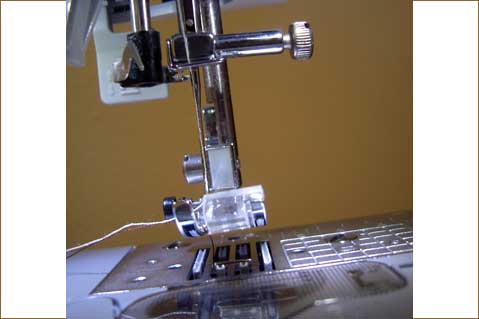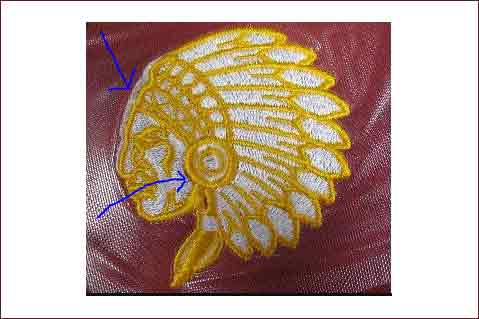Strategy May 09, 2017
How to Digitize for Multi-Head Embroidery Production
Digitizing for single- and multi-head machines is similar, but not identical.
 Digitizing for multi-head embroidery machines presents a unique set of challenges. However, one nice thing is this: Regardless of whether the machine has two heads or 30, if a problem is apparent on all sewing heads, then the issue can almost certainly be attributed to the digitizing. If the problem only shows up on one head, but embroiders well on the others, there is almost certainly a mechanical issue.
Digitizing for multi-head embroidery machines presents a unique set of challenges. However, one nice thing is this: Regardless of whether the machine has two heads or 30, if a problem is apparent on all sewing heads, then the issue can almost certainly be attributed to the digitizing. If the problem only shows up on one head, but embroiders well on the others, there is almost certainly a mechanical issue.
This might seem obvious, but one of the first questions I ask when presented with the question, “Why isn’t this design sewing nicely on my machine?” is “Are you embroidering on a single-head or multi-head machine?” This is never meant to shift responsibility from the programmer, but it’s helpful to know the facts to provide the best solution.
If all heads on an embroidery machine are in good repair and the machine is well-maintained, then, in theory, it shouldn’t matter if there’s one head or many. But the reality is that moving the mass of a multi-head machine’s pantograph induces some considerations for digitizers. Furthermore, some machines are simply better than others.
Embroidery quality is closely tied to the precision of the pantograph movement, as well as the relationship between all the other moving components on an embroidery machine. An experienced programmer knows this and will often adjust a design to match the characteristics of a specific machine. One of the most frequent adjustments a programmer will make is to add a little more pull compensation to designs targeted for multi-head equipment. Since a multi-head machine needs to swing more mass when moving the pantograph, it may be necessary to compensate for this with slightly wider columns in areas with tighter registration. Machine manufacturers might say I am nuts, but I can state categorically from years of experience that for optimum performance it might be necessary to adjust a design, even if two of the exact same multi-head models are sitting next to each other, on the same production floor, running the same design. This could also be true on a single-head machine, but it’s easier to tune a design for a one head than a multi head.
Poor programming will impact a single-head machine just as much as a multi-head machine, but on multi-head machines those problems are multiplied by the number of heads. Here are a few areas where poor programming can impact embroidery production. However, remember the test: If the problem is one head, it’s probably the machine. If the problem is on all heads it’s probably the digitizing.
Thread breaks: Poor programming will cause thread breaks. However, the programming has to be really bad. What you look for here are designs that are overly dense. If the stitches are packed in too tight, thread breaks may result.

Trims: Determine whether the problem is with the stitch tie off, causing a “pull out” – when the thread pulls out of the needle in the trim process (see above photo) – or if the thread is actually breaking at the point of the trim. Digitizers use many methods to tie off thread before and after a trim sequence. If you think you’re getting pull outs instead of thread breaks, you should discuss tie-off methods with your programmer. This phenomenon can also happen when the design starts sewing again in a new location. In this case, look to the tie-in.

Registration: Registration issues occur when the border (be it walk, bean, satin or some other stitch) does not register with the area it’s supposed to trap (see above photo). More times than not, this is related to the programming, but again use the test. If this is happening on one head, then look for things like bent needles, spoiled thread or poor tension. If this is happening on all heads, your programmer needs to edit the design, no matter what he or she might say.
Tension: There are a few symptoms that will manifest on both multi-head and single-head embroidery machines, but are rarely the fault of poor digitizing. These include: white thread showing on the top of the design and bird-nesting. Both are related to tension, and while poor programming can aggravate the condition, programming alone is almost never the cause.
Programming for single- and multi-head embroidery machines is fairly similar, but there are tricks of the trade that seasoned programmers employ to facilitate the highest-quality, production-friendly designs. This doesn’t mean a design programmed for a single head won’t work on a multi head or vice versa. What it does mean, though, is if you really want to optimize your production environment, you should talk with your programmer about your exact equipment mix and ask how to help you improve both the quality and efficiency of your designs.
***
Steve Freeman is the managing partner of Qdigitizing.com. He has been a professional digitizer since 1989 and is trained on Melco, Wilcom and Pulse software systems. Prior to Qdigitizing, he was an embroidery manager at Zazzle.com, and before that, he owned and operated a 60-head embroidery company for 15 years. You can reach him at steve.freeman@qdigitizing.com or (877) 733-4390.
